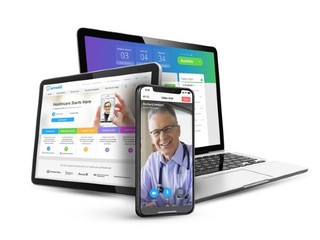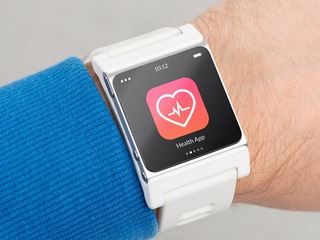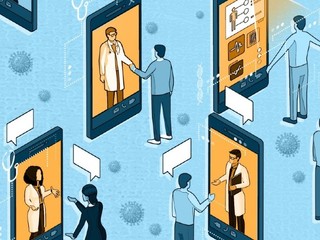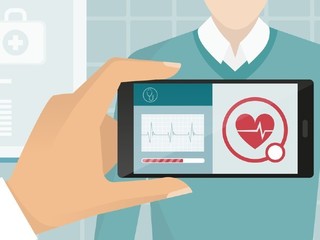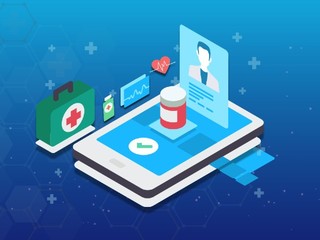Transcarent raises $126M to accelerate AI capabilities
This round values the company at $2.2 billion
Read more...
[Editor's note: Our The Future of Virtual Care event, with American Well, AliveCore, Carbon Health, Kaiser Permanente and MDLIVE and more has become 4 virtual conferences! Register one time for all 4 events! REGISTER HERE]
Plenty has been written about what's been happening in the telemedicine space thanks to COVID, with the number of visits and investments over the last few months absolutely exploding. That's certainly a story worth telling, if for no other reason than the huge impact it might have on how care is delivered going forward.
Virtual care is more than just video visits, though; it encompasses all sorts of remote services, including apps and wearables and services, which are designed put care into the hands of the patient, giving them more information and control. Like telemedicine, health wearables are having a moment; in fact, the wearables space overall is hurting right now thanks to COVID, with the exception of those focused on healthcare, according to new data from ABI Research.
It had been forecasted at the beginning of the year that there would be a 17 percent increase in wearable shipments from 2019; this includes all wearables, which were expected to grow from 241 million to 281 million in 2020. That number was already going to be down from the 23 percent increase the space saw from 2018 to 2019, but it has now been shifted down even further.
In total, there are now expected to be 254 million wearables shipped this year, a mere 5 percent increase from 2019.
According to ABI Research, the reason that wearables have been affected by the COVID-19 pandemic is, in part, because consumer interest in buying what it calls "non-essential devices" has dropped (likely due to less disposable income thanks to mass unemployment and layoffs). There are also issues with the supply chain thanks to COVID which may also have affected the ability for people to buy new devices.
While wearables are down across the board, it's actually the healthcare wearables that have "lowered the impact” of the downturn, Stephanie Tomsett, research analyst at ABI Research, said in statement.
While ABI Research expects all wearables to see a rise in shipments in the second half of the year, as the country opens up again and COVID-19 likely becomes less of a risk, including smartwatches and wellness trackers, it's actually the wearables with the most advanced health monitoring features, such as ECG tracking, sleep apnea detection, arrhythmia detection, and blood oxygen tracking, that are expected to see the best turnaround, and will help carry the space over the next few years, Tomsett said.
“The COVID-19 pandemic has brought a higher health awareness to all individuals around the world. Wearables with advanced health monitoring features will begin to buoy the wearables market in the second half of 2020 and pave the way for 289 million wearable shipments by 2021 and 329 million by 2022 as the world recovers from the pandemic.”
Using wearables to detect COVID-19
In addition to the aforementioned healthcare features that wearables companies are adding to their devices to keep consumer interested, they are also currently performing tests to see if their devices can be used to detect viruses like COVID-19. The idea is to potentially offset future pandemics.
Fitbit recently launched the Fitbit COVID-19 Study, which is designed to help the company determine whether or not it can build an algorithm to detect COVID-19 before symptoms start.
Users who are over the age of 21, living in the United States or Canada and have had or currently have COVID-19, or symptoms consistent with the flu, are being invited to answer questions within the the FitBit app, such as whether or not they have, had, or may have had flu or COVID-19; any symptoms they are experiencing or may have experienced; and any additional related details regarding their medical history and demographics.
These answers will then be used in conjunction with other indicators in the user's Fitbit data to help researchers try to determine early signs of COVID-19 and flu.
Fitbit had previously partnered with the Scripps Research Translational Institute and the Stanford Medicine Healthcare Innovation Lab on similar stidues.
The Scripps Research Translational Institute had previously launched DETECT, an app-based research program that analyzes participants’ wearable health data, such as heart rate, sleep and activity levels, to detect the emergence of influenza, coronavirus and viral illnesses.
The Stanford Healthcare Innovation lab, meanwhile, launched the COVID-19 wearables study, which aims to establish whether data collected from wearables, including Fitbit devices, can be used to predict the onset of an infectious disease such as COVID-19 before the actual symptoms start. Researchers are collecting data such as heart rate, skin temperature, and blood oxygen saturation, among others.
(Image source: itchronicles.com)
This round values the company at $2.2 billion
Read more...That gives its customers access to hundreds of PSV databases through a single query
Read more...The company plans to bring its device to market in Europe before expanding to the United States
Read more...
